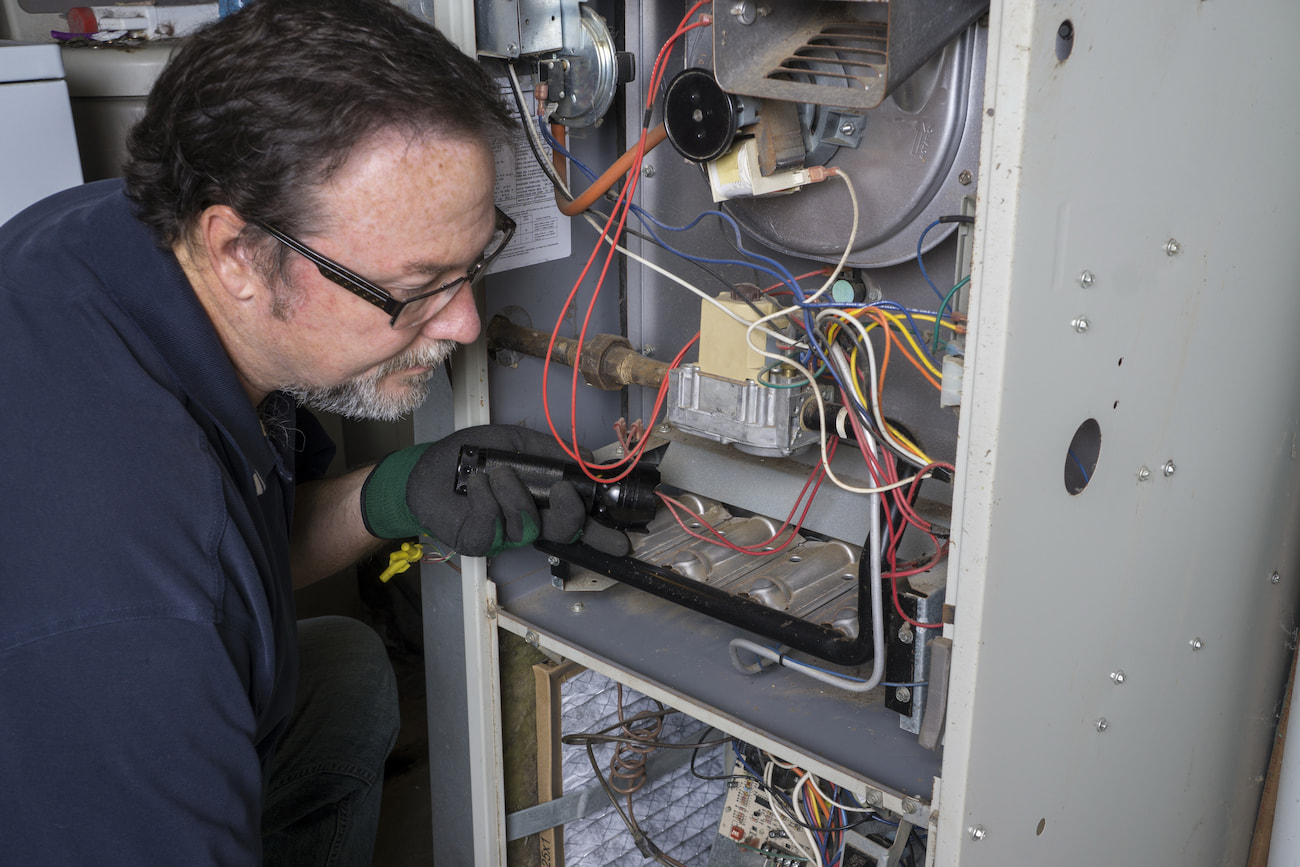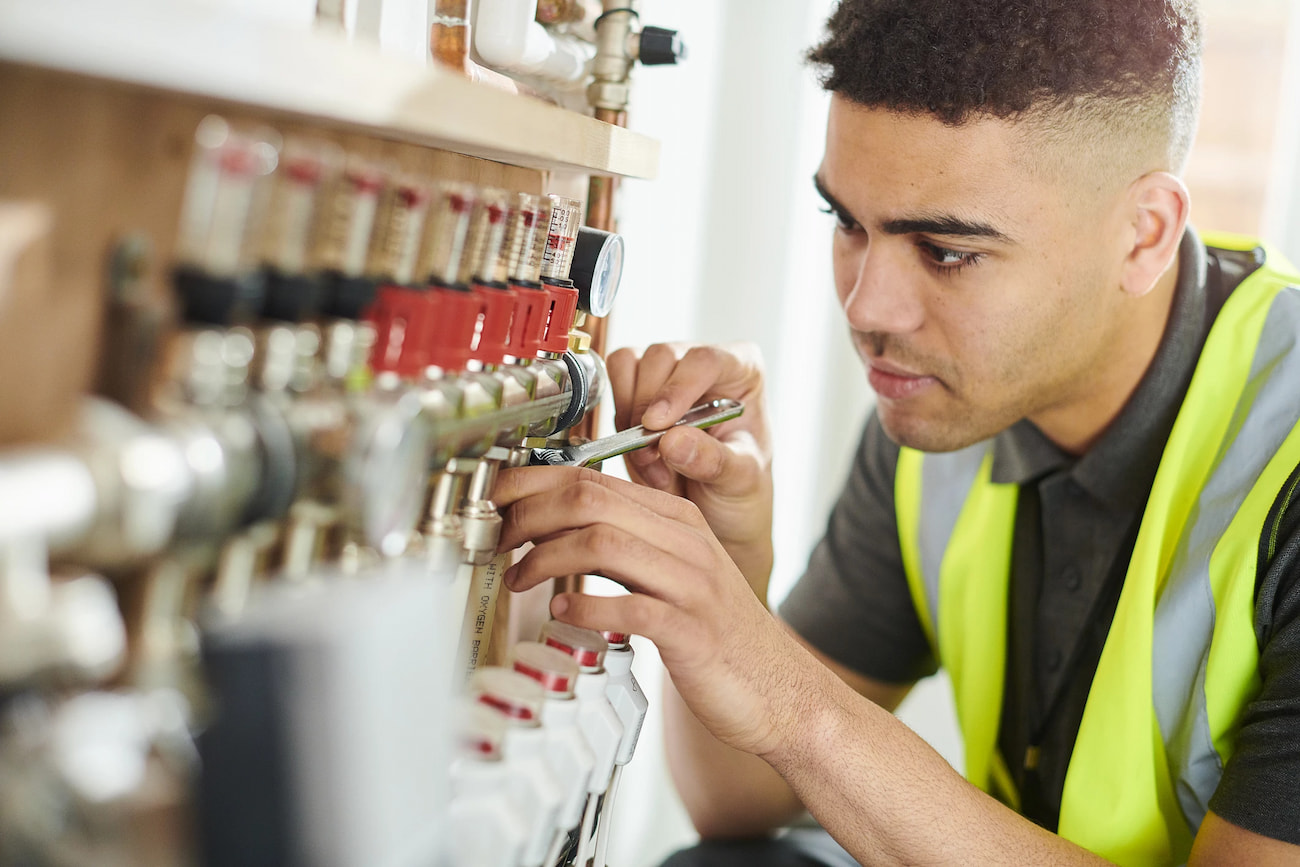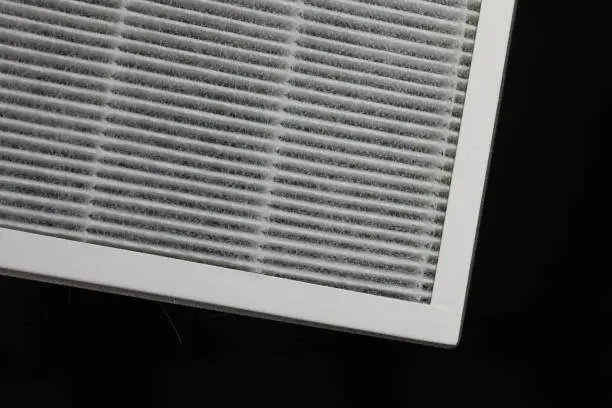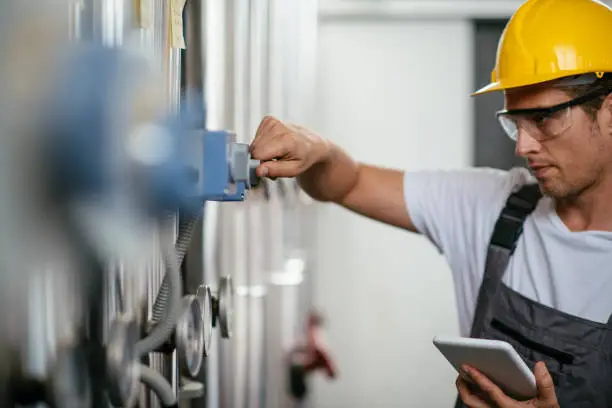
Table of Contents
When the cold Canadian winters hit, having a reliable furnace blower is crucial for a cozy and comfortable home. However, there’s nothing more frustrating than realizing your furnace blower not working when you need it most. In this comprehensive guide, we’ll explore the common issues that can cause your furnace blower motor to malfunction and provide practical fixes to get your heating system back on track.
Common Symptoms of a Blower Motor Problem
A malfunctioning furnace blower motor can manifest itself in various ways, and recognizing these telltale signs is crucial for timely intervention. Here are the common symptoms to look out for:
- Insufficient Heating: When your furnace is running, but you’re still shivering in your home, it’s a clear indication that the blower motor might be compromised. In such cases, warm air fails to circulate efficiently, leaving rooms uncomfortably cold despite the furnace’s operation.
- Unusual Noises: Pay attention to any unusual sounds emanating from your heating system. A grinding, squealing, or banging noise coming from the furnace can be a sign of a struggling blower motor. These noises often result from worn-out bearings, loose components, or debris interfering with the blower’s operation.
- Reduced Airflow: If you notice a significant drop in the airflow coming from your vents, it could be due to a blower motor problem. Reduced airflow means your furnace isn’t effectively distributing warm air throughout your home, leading to uneven heating.
- Inconsistent Heating: In some cases, you might experience uneven heating, with some rooms being too warm while others remain chilly. This can be attributed to a failing blower motor unable to distribute air evenly across your home.
- Frequent Cycling: If your furnace frequently turns on and off in short cycles, it might be struggling to maintain a consistent temperature. A malfunctioning blower motor can disrupt the proper functioning of your furnace, causing it to overheat and shut down prematurely.
- Unresponsive Thermostat: Your thermostat plays a pivotal role in controlling your heating system. If your thermostat settings seem correct, but your home remains uncomfortably cold, the issue could lie with the furnace blower motor not responding to the thermostat’s commands.
- Burning Odors: Strange odors, especially a burning smell, can indicate an overheating blower motor or other electrical issues within your furnace. In such cases, it’s essential to turn off your furnace immediately and seek professional assistance to prevent potential fire hazards.
Recognizing the signs of a malfunctioning furnace blower motor is the first step in resolving the issue. If you find that your home is not getting warm as it should, or you hear strange noises coming from your furnace, you might be dealing with a furnace blower not working problem.
Common Causes of Furnace Blower Motor Problems

Understanding the root causes behind furnace blower motor malfunctions is essential for effective troubleshooting. Here, we delve into the typical culprits that can lead to issues with your blower motor, providing you with valuable insights into potential sources of trouble:
- Electrical Woes: Electrical problems are a frequent contributor to furnace blower motor issues. Blown fuses within the furnace circuit or tripped circuit breakers in your electrical panel can disrupt power supply to the motor. Regularly check for blown fuses and ensure circuit breakers are functioning correctly to avoid these interruptions.
- Motor Wear and Tear: Over time, the blower motor can succumb to wear and tear, resulting in decreased performance. Like any mechanical component, the motor’s moving parts, including bearings, may wear out, leading to suboptimal functioning. Proper maintenance and regular inspection can help identify signs of wear early on.
- Neglected Maintenance: Neglecting routine maintenance tasks can be a silent but significant contributor to furnace blower motor problems. A dirty or clogged air filter forces the blower motor to work harder, potentially causing it to overheat or malfunction. Regularly changing the air filter is a simple yet critical step to prevent this issue.
- Blocked Airflow: Any obstruction in the airflow path can hinder the blower motor’s efficiency. Dust, debris, or objects near the blower wheel can obstruct its rotation, leading to reduced airflow and uneven heating. Keep the area around your furnace clean and free of obstructions.
- Thermostat Troubles: The thermostat plays a pivotal role in regulating your heating system. If it malfunctions or is incorrectly calibrated, it can send inaccurate signals to the furnace blower motor, causing it to behave erratically or not operate as needed. Regularly check and calibrate your thermostat to ensure proper communication with the blower.
- Control Board Issues: The control board, a crucial component in modern HVAC systems, can develop faults. Wiring problems, corrosion, or damage to the control board can disrupt the blower motor’s functioning. Visual inspections of the control board and its connections are advisable.
- Fan Belt Problems: Some HVAC systems utilize fan belts to connect the motor to the blower wheel. If the fan belt becomes loose, damaged, or breaks, it can impede the blower motor’s operation. Regularly inspect the fan belt for signs of wear and replace it if necessary.
Remember, regular maintenance can prevent many of these issues. Reach out to HVAC Service Solutions for professional maintenance and inspections to keep your heating system in optimal condition. Don’t wait for problems to arise—take proactive steps to ensure your home’s comfort and safety.
Check out 10 of the most common furnace repair problems in our article via the link below.
https://thehvacservice.ca/understanding-furnace-issues-from-filter-sizes-to-water-leaks/
DIY Troubleshooting & Fixes
Before calling in the professionals, there are some steps you can take to troubleshoot and potentially fix a furnace blower not working issue yourself. These practical steps can often resolve minor issues, saving you time and money. Here’s your roadmap to DIY success:
1. Check for Electrical Issues: Begin by inspecting your electrical system. Check for blown fuses in the furnace circuit or a tripped circuit breaker in your electrical panel. If you find any, replace the blown fuse or reset the breaker to see if this restores power to the blower motor.
2. Inspect the Air Filter: A clogged or dirty air filter can place undue strain on the blower motor. Locate the air filter in your HVAC system and inspect it for debris and dust buildup. If it’s dirty, replace it with a clean one. Regularly changing your air filter is a simple yet effective maintenance task that can prevent future issues.
3. Clear Obstructions: Ensure there are no obstructions hindering the blower motor’s operation. Debris or objects near the blower wheel can impede its rotation and reduce airflow. Safely remove any obstacles to restore proper functioning.
4. Verify Thermostat Settings: Confirm that your thermostat is set to the desired temperature and heating mode. Sometimes, a simple adjustment can kickstart your furnace blower motor back into action.
5. Inspect Wiring and Connections: Turn off the power to your furnace and carefully inspect the wiring and connections. Loose or damaged wires can disrupt the electrical flow and affect the blower motor. Reconnect any loose wires and replace any damaged ones if you possess the necessary skills and tools.
6. Lubricate the Blower Motor: If your blower motor operates with oil ports (not all do), lubricating it can help reduce friction and improve its performance. Consult your furnace’s manual for guidance on proper lubrication techniques and the type of oil to use.
7. Reset the Furnace: Sometimes, a simple reset can resolve minor issues. Turn off the power to your furnace, wait a few minutes, and then turn it back on. This can clear any temporary glitches in the system.
8. Monitor for Improvement: After performing these DIY troubleshooting steps, observe your furnace’s performance. If you notice an improvement in heating, airflow, or reduced noise, you may have successfully resolved the issue.
However, it’s essential to exercise caution during DIY efforts. If you’re unsure about any step or if the problem persists despite your best efforts, it’s time to contact a professional HVAC technician. Attempting complex repairs without the necessary expertise can lead to more significant problems or safety hazards. Remember, your comfort and safety are paramount, and when in doubt, seek professional assistance to ensure your furnace blower motor is in optimal working condition.
When to Call a Professional HVAC Technician

While DIY troubleshooting can be a valuable initial step, there are instances where it’s paramount to enlist the expertise of a qualified HVAC technician. If you encounter any of the following scenarios or if your DIY efforts prove ineffective, it’s time to summon the professionals:
- Complex Issues: If you suspect the problem with your furnace blower motor is more intricate than a simple fix, it’s wise to seek professional assistance. Complex issues may involve intricate electrical or mechanical components that require specialized knowledge and tools to diagnose and repair effectively.
- Persistent Problems: If your DIY troubleshooting efforts don’t yield results and the issue persists, continuing to tinker with the system can potentially worsen the problem. A professional technician can conduct a thorough assessment, pinpoint the root cause, and implement precise solutions.
- Safety Concerns: Safety should always be a top priority. If you encounter burning odors, unusual sounds, or any signs of electrical hazards during your troubleshooting, immediately turn off your furnace and contact a professional. These issues can pose serious safety risks, and attempting to resolve them without the requisite expertise can be dangerous.
- Regular Maintenance: Don’t underestimate the significance of regular maintenance. Even when your furnace blower motor seems to be operating smoothly, annual professional inspections can help detect potential problems early, preventing major breakdowns and ensuring the longevity of your heating system.
By calling a professional furnace repair service in Canada, you can ensure that your furnace blower motor receives expert care, minimizing downtime, and maximizing its efficiency and lifespan.
Preventative Maintenance Tips
Proactive care is the cornerstone of a reliable heating system. Here are essential preventative maintenance tips to keep your furnace blower motor and overall HVAC system in peak condition:
- Regular Air Filter Replacement: Make a habit of replacing your air filter every 1 to 3 months, depending on usage and filter type. A clean filter ensures proper airflow and reduces strain on the blower motor.
- Annual Professional Inspections: Schedule an annual inspection with a certified HVAC technician. These experts can identify and address potential issues before they escalate, ensuring your system runs smoothly throughout the year.
- Thermostat Optimization: Set your thermostat at energy-efficient temperatures. Lowering the temperature when you’re away or asleep can reduce wear on the furnace blower motor and lower your energy bills.
- Clear Vent Areas: Ensure that vents, registers, and the area around your furnace remain unobstructed. Blocked airflow can strain the blower motor and lead to uneven heating.
- Lubrication and Maintenance: If applicable, follow the manufacturer’s recommendations for lubricating the blower motor and other moving parts. Regular maintenance can extend their lifespan.
By following these preventative maintenance tips, you’ll not only enhance the longevity of your furnace blower motor but also enjoy consistent warmth and energy savings during the winter months. Reach out to HVAC Service Solutions for professional assistance in implementing these practices and maintaining a trouble-free heating system. Your comfort and peace of mind are our top priorities.
Conclusion
In the unforgiving Canadian winters, a malfunctioning furnace blower motor can quickly turn your home into an icy discomfort zone. Regular maintenance and professional inspections are the guardians of a dependable heating system. They not only prevent major breakdowns but also extend the life of your furnace blower motor, ensuring your home remains warm and cozy.
Don’t let a faulty furnace blower disrupt your comfort. Contact HVAC Service Solutions, your trusted partner in Canada, for expert repair and maintenance. Our certified technicians are equipped to address any heating system issue, including a furnace blower not working, providing you with peace of mind during the harshest of winters.
FAQs
Why is my furnace blower not working at all?
A complete failure of the furnace blower can result from various underlying issues. Common causes include electrical problems, a malfunctioning blower motor, or thermostat-related issues. Electrical problems may include blown fuses within the furnace circuit or tripped circuit breakers in your electrical panel. If the blower motor is worn out or has failed, it can cease to function altogether. Additionally, thermostat issues, such as incorrect settings or a malfunctioning thermostat, can prevent the blower from working as expected. In such cases, it’s essential to diagnose and address the specific cause of the failure.
What are the common signs of a furnace blower not working correctly?
There are several telltale signs that your furnace blower may not be working correctly. These common symptoms include:
- Insufficient Heating: Despite the furnace running, your home remains uncomfortably cold.
- Unusual Noises: You hear grinding, squealing, or banging noises emanating from your furnace.
- Reduced Airflow: Airflow from the vents is weaker than usual.
- Inconsistent Heating: Some rooms are too warm while others remain chilly.
- Frequent Cycling: The furnace frequently turns on and off rapidly, struggling to maintain a consistent temperature.
- Unresponsive Thermostat: The thermostat is set correctly, but your home remains cold, indicating an issue with the blower motor not responding to the thermostat’s commands.
- Burning Odors: A burning smell suggests an overheating blower motor or electrical issues, warranting immediate attention and turning off the furnace for safety.
Identifying these symptoms promptly allows you to take appropriate action and prevent further damage.
Can a dirty air filter cause my furnace blower to stop working?
Yes, a dirty or clogged air filter can indeed cause your furnace blower to stop working effectively. Air filters are essential components of your HVAC system, designed to trap dust, debris, and pollutants from entering the system. Over time, these filters can become clogged with accumulated particles, obstructing the airflow. When the airflow is impeded, the blower motor has to work harder to distribute air throughout your home, potentially causing it to overheat or malfunction. Therefore, regular air filter replacement is crucial to maintaining the efficiency and longevity of your furnace blower and heating system.
How can I troubleshoot my furnace blower if it's not working?
Troubleshooting your furnace blower when it’s not working can be a step-by-step process:
- Check for Electrical Issues: Inspect the furnace circuit for blown fuses and reset circuit breakers if necessary.
- Inspect the Air Filter: Examine the air filter for debris and dust buildup and replace it if dirty.
- Clear Obstructions: Ensure there are no obstructions near the blower wheel that might hinder its rotation.
- Verify Thermostat Settings: Double-check that the thermostat is set correctly for heating mode and the desired temperature.
- Inspect Wiring and Connections: Safely turn off the furnace power and inspect wiring and connections for loose or damaged wires.
- Reset the Furnace: If none of the above steps resolve the issue, turn off the furnace, wait a few minutes, and then turn it back on.
However, it’s crucial to exercise caution during troubleshooting, and if the issue persists or seems complex, it’s advisable to contact a professional HVAC technician for a thorough assessment and repair.
What should I do if DIY troubleshooting doesn't resolve the issue?
If your DIY troubleshooting efforts fail to resolve the issue, or if you encounter more complex problems during the process, it’s time to contact a professional HVAC technician. There are several reasons to seek professional assistance:
- Complex Issues: If you suspect the problem with your furnace blower is more intricate than a simple fix, it’s wise to seek professional assistance. Complex issues may involve intricate electrical or mechanical components that require specialized knowledge and tools to diagnose and repair effectively.
- Persistent Problems: If your DIY efforts don’t work and the issue persists, continuing to tinker with the system can potentially worsen the problem. A professional technician can conduct a thorough assessment, pinpoint the root cause, and implement precise solutions.
- Safety Concerns: Safety should always be a top priority. If you encounter burning odors, unusual sounds, or any signs of electrical hazards during your troubleshooting, immediately turn off your furnace and contact a professional. These issues can pose serious safety risks, and attempting to resolve them without the requisite expertise can be dangerous.
- Regular Maintenance: Even when your furnace blower seems to be operating smoothly, annual professional inspections can help detect potential issues early, preventing major breakdowns and ensuring the longevity of your heating system.
By calling a professional HVAC technician in these situations, you can ensure that your furnace blower receives expert care, minimizing downtime and maximizing its efficiency and lifespan.
Are there any safety concerns associated with a malfunctioning furnace blower?
Yes, there can be safety concerns associated with a malfunctioning furnace blower, and it’s essential to address them promptly. Here are a few potential safety issues to be aware of:
- Burning Odors: If you detect a burning or unusual odor coming from your furnace, it could indicate overheating or electrical problems. In such cases, it’s crucial to turn off your furnace immediately and contact a professional HVAC technician. Ignoring these odors can lead to fire hazards.
- Electrical Hazards: Electrical issues within your furnace can pose significant safety risks, including electrical fires. Signs of electrical hazards may include sparks, flickering lights, or unusual sounds coming from the electrical components. In the presence of these signs, turn off your furnace and seek professional assistance promptly.
- Carbon Monoxide (CO) Concerns: While not directly related to the blower motor, a malfunctioning furnace can potentially emit carbon monoxide, a colorless and odorless gas that can be deadly. Symptoms of CO exposure include dizziness, headaches, and nausea. If you suspect a CO leak, immediately evacuate your home, seek fresh air, and contact emergency services.
- Gas Leaks: If your furnace runs on natural gas or propane and you notice a gas smell, it’s crucial to shut off the gas supply to your furnace, leave your home, and contact the gas company and a professional HVAC technician. Gas leaks can lead to explosions or fires if not addressed promptly.
Addressing these safety concerns should be a top priority when dealing with a malfunctioning furnace blower. Safety precautions and professional assistance can prevent potentially hazardous situations.
How often should I replace my furnace's air filter to prevent blower problems?
Regular air filter replacement is essential to prevent blower problems and maintain the overall efficiency of your HVAC system. The frequency of air filter replacement depends on factors such as usage and the type of filter you have. Here are some general guidelines:
- Standard Filters: If you have a standard fiberglass or pleated filter, it’s advisable to replace it every 1 to 3 months. Monthly replacement is often recommended for households with pets or individuals with allergies due to increased airborne particles.
- High-Efficiency Filters: If your furnace uses a high-efficiency filter, it may have a longer lifespan, typically around 6 to 12 months. However, it’s essential to follow the manufacturer’s recommendations for replacement.
- Electronic Filters: Electronic air filters can be washed and reused, but they require regular cleaning, typically every 1 to 3 months, depending on usage and the manufacturer’s instructions.
Regularly replacing or cleaning your air filter ensures that your blower motor can operate efficiently, preventing strain and overheating that can lead to blower problems.
Can a faulty thermostat cause my furnace blower not to work properly?
Yes, a faulty thermostat can indeed cause your furnace blower not to work properly. The thermostat serves as the communication hub between your heating system and your desired temperature settings. If the thermostat malfunctions or is incorrectly calibrated, it can send inaccurate signals to the furnace blower motor, leading to improper operation. Common thermostat-related issues include:
- Incorrect Settings: Ensure that your thermostat is set to the appropriate temperature for heating mode and that the settings match your preferences.
- Calibration Problems: Over time, thermostats can become misaligned or lose calibration accuracy. This can result in temperature discrepancies and erratic furnace operation.
- Wiring Issues: Faulty thermostat wiring or loose connections can disrupt communication between the thermostat and the blower motor, leading to malfunction.
Regularly checking and calibrating your thermostat, if needed, can prevent blower problems caused by thermostat issues.
What is the role of regular maintenance in preventing furnace blower issues?
Regular maintenance plays a crucial role in preventing furnace blower issues and ensuring the overall health of your heating system. Here’s how:
- Early Issue Detection: Professional HVAC technicians can identify potential problems early during routine maintenance inspections. Catching issues before they escalate prevents major breakdowns and costly repairs.
- Cleaning and Lubrication: Maintenance includes cleaning and lubricating essential components, such as the blower motor and its moving parts. This maintenance task reduces friction, wear, and tear, extending the lifespan of the blower motor.
- Air Filter Replacement: Technicians can replace or clean the air filter, ensuring proper airflow and preventing strain on the blower motor.
- Thermostat Calibration: Maintenance may involve calibrating the thermostat to ensure accurate temperature readings and proper communication with the blower motor.
- Overall System Efficiency: Regular maintenance ensures that your heating system operates efficiently, reducing energy consumption and lowering utility bills.
- Safety Checks: Technicians can perform safety checks to detect and address potential safety hazards, such as gas leaks or carbon monoxide issues.
By scheduling annual professional maintenance, you can proactively address blower motor-related issues, ensuring that your heating system runs smoothly and efficiently.
How can HVAC Service Solutions help with furnace blower not working issues in Canada?
HVAC Service Solutions is your trusted partner in Canada for addressing furnace blower not working issues and ensuring your home’s comfort and safety. Here’s how we can assist you:
- Professional Repairs: Our certified HVAC technicians have the expertise to diagnose and repair furnace blower issues accurately and efficiently.
- Maintenance Services: We offer comprehensive maintenance services, including air filter replacement, cleaning, lubrication, and safety checks, to prevent blower problems and maintain the optimal performance of your heating system.
- Thermostat Calibration: We can calibrate and optimize your thermostat settings to ensure proper communication with the blower motor.
- Safety Assurance: Our technicians prioritize safety, addressing any safety concerns related to your furnace and ensuring your home is free from hazards.
- Emergency Services: In the event of unexpected breakdowns or safety emergencies, our team is available for prompt and reliable assistance.
Contact HVAC Service Solutions today to schedule your service and keep your home warm, safe, and welcoming. Your comfort and peace of mind are our top priorities.
Share


















